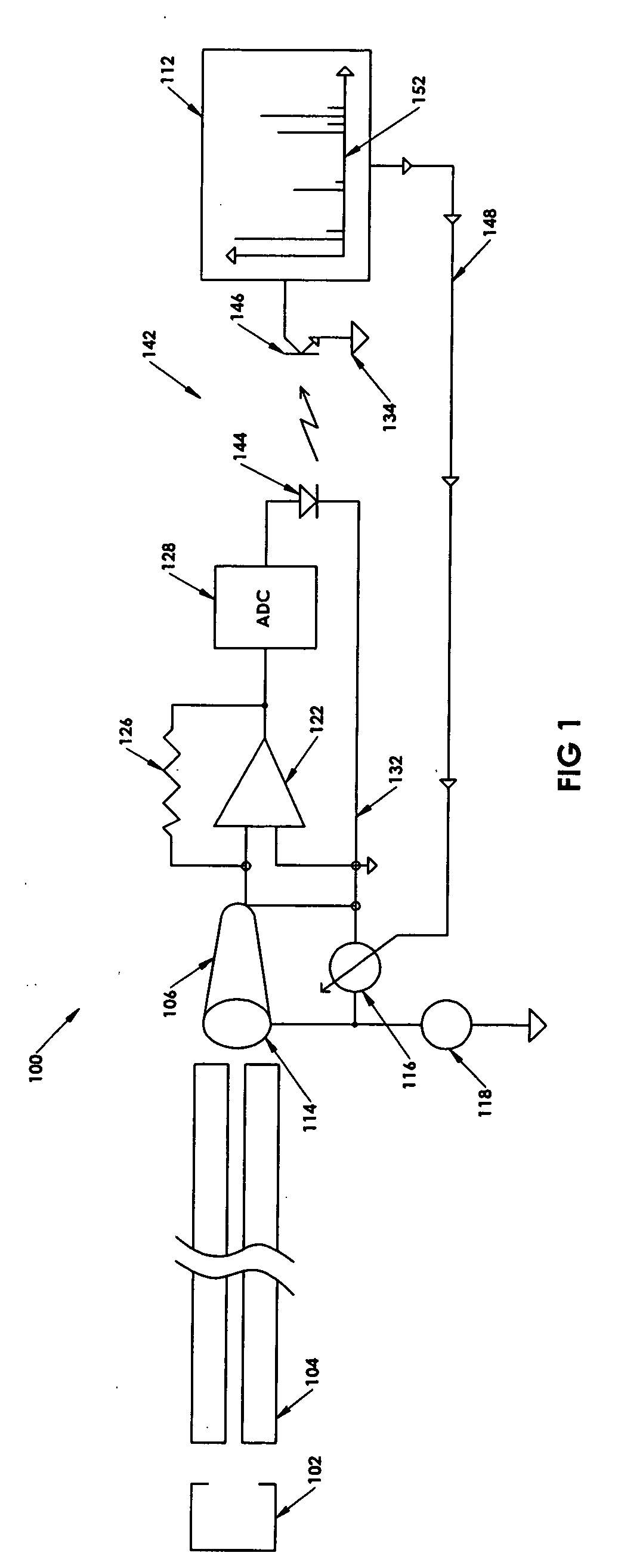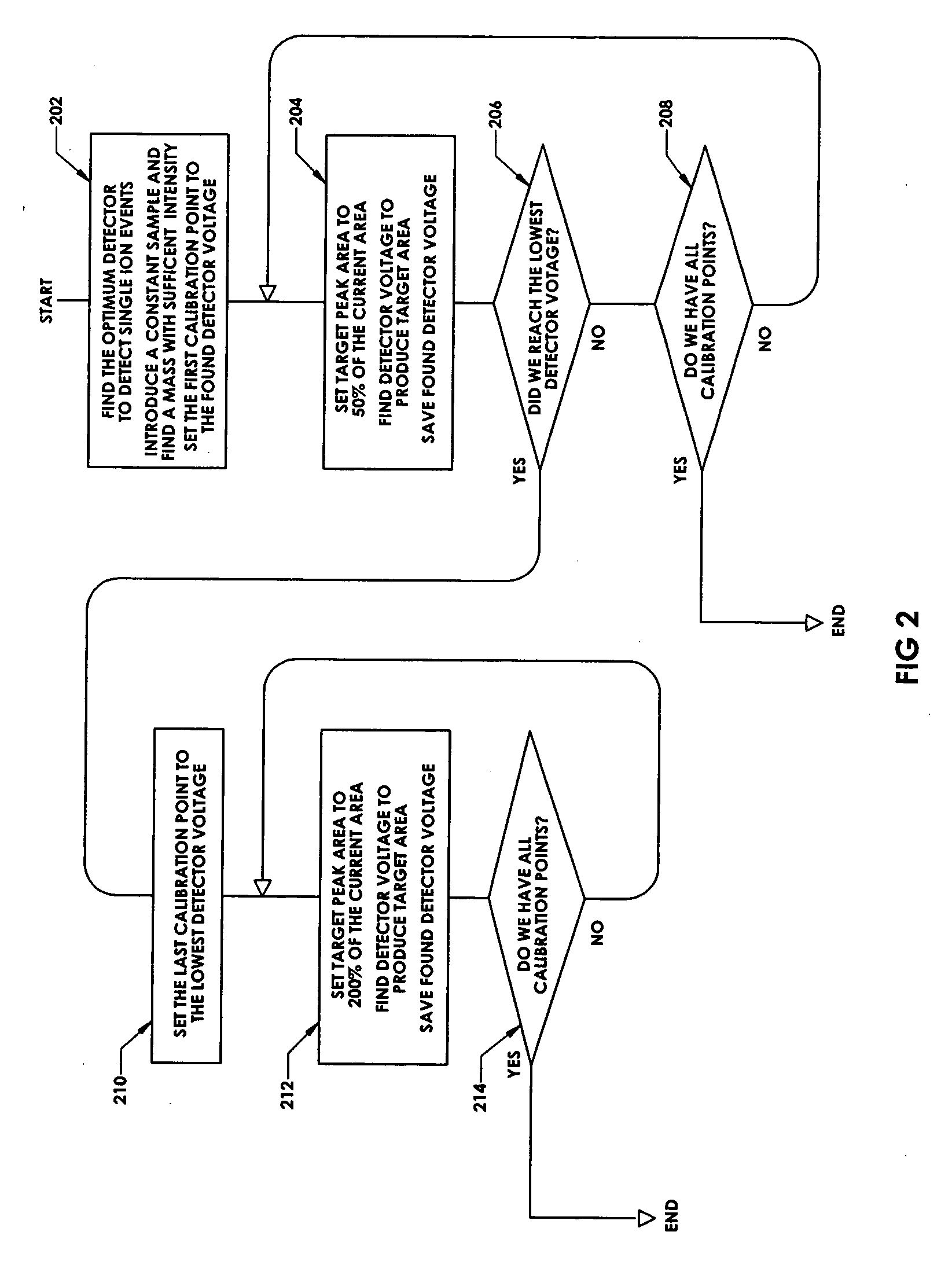Ion detection in mass spectrometry with extended dynamic range
a mass spectrometry and dynamic range technology, applied in the field of ion detection, can solve the problems of premature stress or ageing of specialized materials, limited dynamic range of ion detector systems, and adverse effects on the detection accuracy of ion detectors, so as to reduce the gain of detectors, increase detector gain, and increase target peak size
- Summary
- Abstract
- Description
- Claims
- Application Information
AI Technical Summary
Benefits of technology
Problems solved by technology
Method used
Image
Examples
Embodiment Construction
[0021] In general, the term “communicate” (for example, a first component “communicates with” or “is in communication with” a second component) is used herein to indicate a structural, functional, mechanical, electrical, optical, magnetic, ionic or fluidic relationship between two or more components or elements. As such, the fact that one component is said to communicate with a second component is not intended to exclude the possibility that additional components may be present between, and / or operatively associated or engaged with, the first and second components.
[0022] The subject matter disclosed herein generally relates to dynamic adjustment of the control voltage applied to an electron multiplier to improve performance. Examples of implementations of methods and related devices, apparatus, and / or systems are described in more detail below with reference to FIGS. 1-3. These examples are described in the context of mass spectrometry. However, any process that utilizes an electro...
PUM
 Login to View More
Login to View More Abstract
Description
Claims
Application Information
 Login to View More
Login to View More - R&D
- Intellectual Property
- Life Sciences
- Materials
- Tech Scout
- Unparalleled Data Quality
- Higher Quality Content
- 60% Fewer Hallucinations
Browse by: Latest US Patents, China's latest patents, Technical Efficacy Thesaurus, Application Domain, Technology Topic, Popular Technical Reports.
© 2025 PatSnap. All rights reserved.Legal|Privacy policy|Modern Slavery Act Transparency Statement|Sitemap|About US| Contact US: help@patsnap.com



